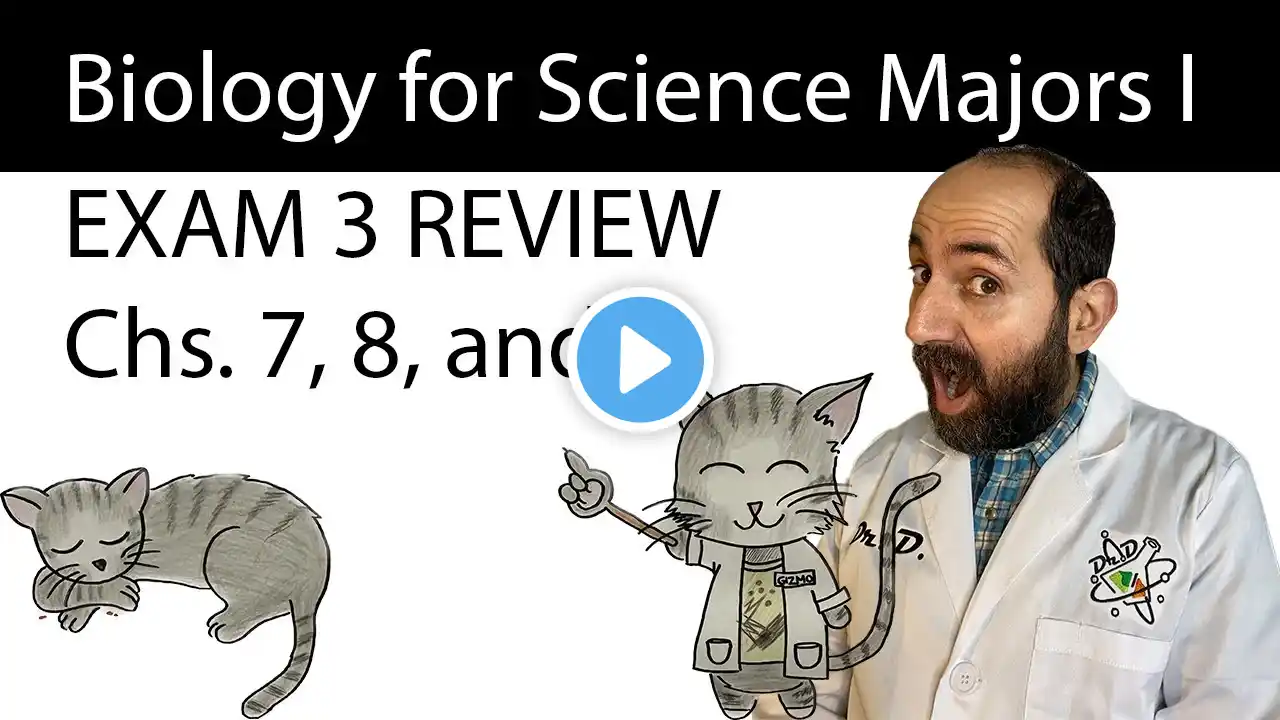
Chapter 8: Introduction to Metabolism | Campbell Biology (Podcast Summary)
Chapter 8 of Campbell Biology explores metabolism, the chemical reactions that sustain life, with a focus on energy transformations, thermodynamics, ATP, and enzyme function. Metabolism consists of catabolic pathways, which break down molecules to release energy (such as cellular respiration), and anabolic pathways, which build complex molecules and require energy (such as protein synthesis). The chapter introduces the laws of thermodynamics, explaining how organisms transform energy and how these processes affect entropy. ATP (adenosine triphosphate) is highlighted as the cell’s energy currency, powering cellular work through energy coupling. Finally, the chapter discusses how enzymes speed up reactions by lowering activation energy and how cells regulate enzyme activity to control metabolism. 🔹 Key Concepts 🔹 Metabolic Pathways: The Organization of Chemical Reactions Metabolism includes all of an organism’s chemical reactions, arranged in pathways. Catabolic pathways break down molecules, releasing energy (such as cellular respiration). Anabolic pathways build molecules, consuming energy (such as protein synthesis). 🔹 Energy Transformations and Thermodynamics Energy is the capacity to cause change and exists as: Kinetic energy (motion, includes thermal energy and heat). Potential energy (stored energy, includes chemical energy). First Law of Thermodynamics: Energy cannot be created or destroyed, only transformed. Second Law of Thermodynamics: Every energy transfer increases entropy, or disorder. 🔹 Free Energy and Spontaneous Reactions Gibbs free energy, or G, measures energy available to do work. Exergonic reactions release energy and occur spontaneously. Endergonic reactions absorb energy and are nonspontaneous. Equilibrium is the point of maximum stability; living cells avoid equilibrium to stay alive. 🔹 ATP: The Cell’s Energy Currency ATP (adenosine triphosphate) consists of ribose, adenine, and three phosphate groups. Hydrolysis of ATP releases energy, driving cellular work. Phosphorylation transfers a phosphate group to another molecule, making it more reactive. ATP cycle: ATP is regenerated from ADP and inorganic phosphate through cellular respiration. 🔹 Enzymes: Biological Catalysts Enzymes speed up reactions by lowering activation energy. They do not change free energy values, only speed up spontaneous reactions. Substrate specificity: The active site binds only specific molecules. Induced fit model: Enzymes slightly change shape to enhance substrate binding. Factors affecting enzyme activity: Temperature and pH: Each enzyme has an optimal temperature and pH. Cofactors and Coenzymes: Non-protein helpers such as vitamins or metal ions. Inhibitors: Competitive inhibitors block the active site. Noncompetitive inhibitors bind elsewhere, altering enzyme shape. 🔹 Regulation of Metabolism Allosteric regulation: Molecules bind to an enzyme’s allosteric site to activate or inhibit function. Cooperativity: Binding of a substrate increases the activity of other active sites. Feedback inhibition: The end product of a metabolic pathway inhibits an early enzyme, preventing overproduction. 📖 Glossary of Terms 🔹 Activation Energy – The initial energy needed to start a reaction. 🔹 Active Site – The specific enzyme region where the substrate binds. 🔹 Allosteric Regulation – The binding of a molecule to an enzyme at a site other than the active site, altering its function. 🔹 ATP (Adenosine Triphosphate) – The primary energy carrier in cells. 🔹 Catabolic Pathway – A metabolic pathway that breaks down molecules and releases energy. 🔹 Endergonic Reaction – A nonspontaneous reaction that absorbs energy. 🔹 Energy Coupling – Using an exergonic process to drive an endergonic one. 🔹 Enzyme – A biological catalyst that speeds up reactions by lowering activation energy. 🔹 Exergonic Reaction – A spontaneous reaction that releases energy. 🔹 Feedback Inhibition – A regulatory process where the end product inhibits an enzyme in its own pathway. 🔹 First Law of Thermodynamics – Energy cannot be created or destroyed, only transformed. 🔹 Gibbs Free Energy – The energy available to perform work. 🔹 Induced Fit Model – The enzyme changes shape to fit the substrate better. 🔹 Metabolism – The total chemical reactions in an organism. 🔹 Second Law of Thermodynamics – Every energy transfer increases entropy, or disorder. Campbell Biology Chapter 8 summary, Metabolism and Bioenergetics, Laws of Thermodynamics, ATP and Energy, Enzymes and Activation Energy, Anabolic and Catabolic Pathways, Free Energy and Gibbs Equation, Feedback Inhibition, Cellular Respiration, AP Biology Study Guide, College Biology Notes

